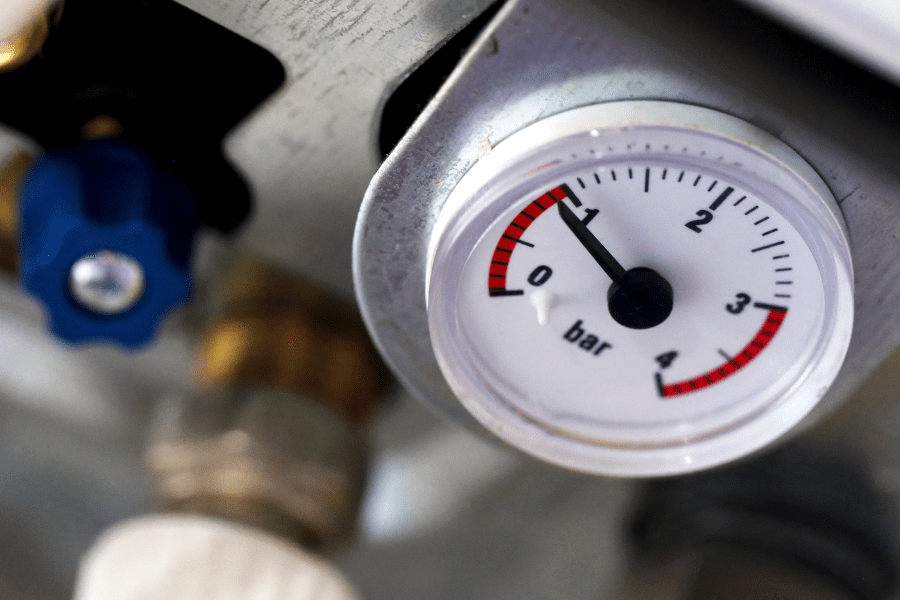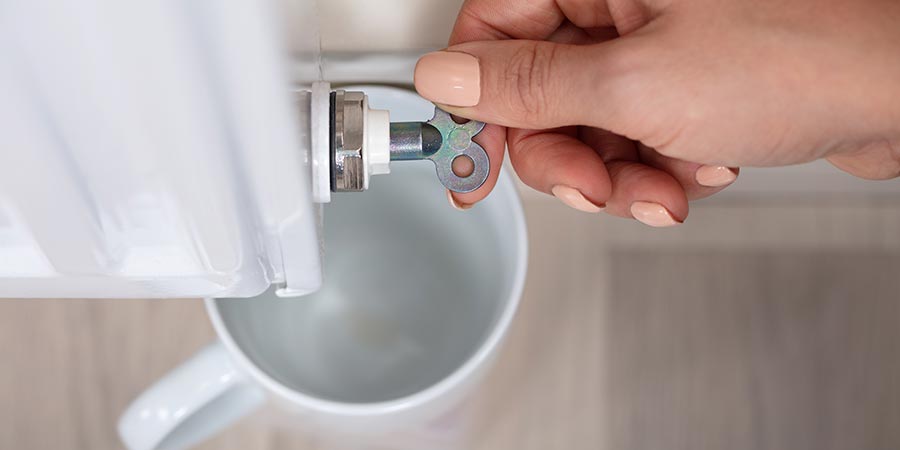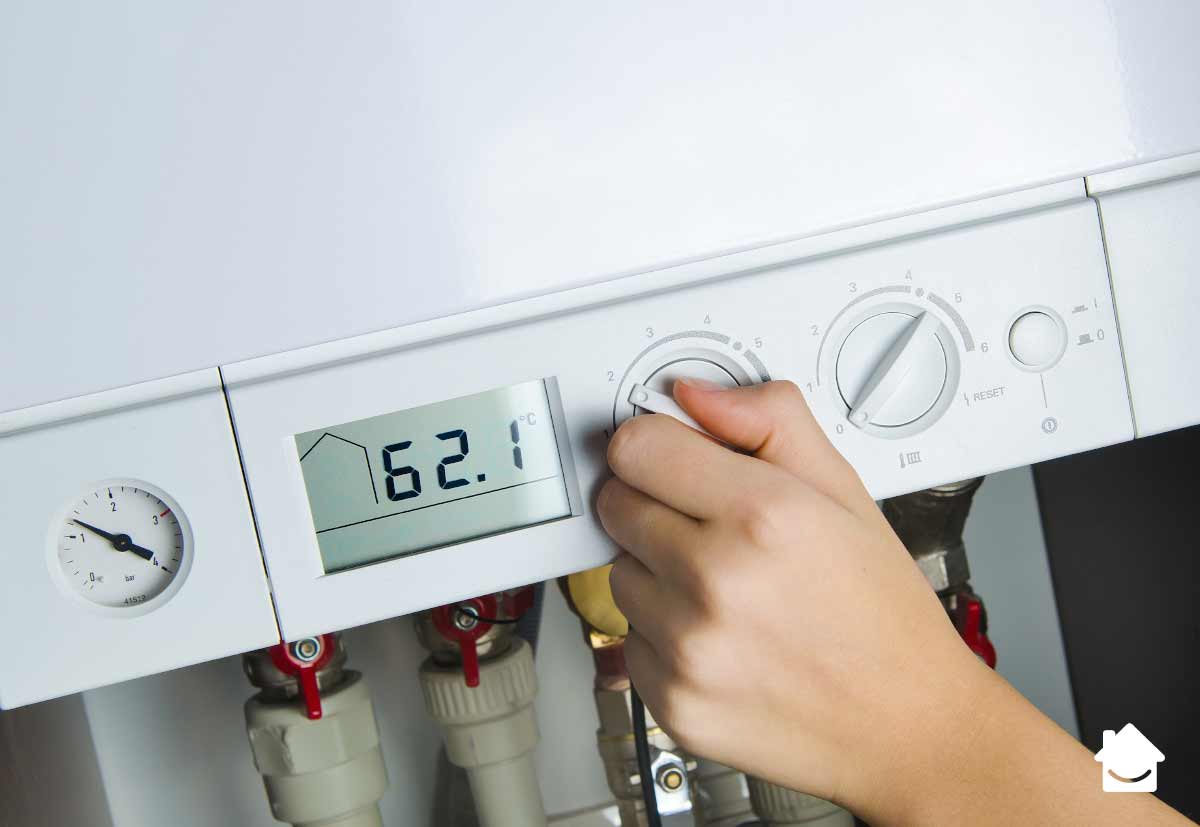If your home has been left without any heating or hot water, there could be a problem with your boiler pressure. This simple guide will explain everything you need to know about low boiler pressure, from symptoms, to causes, to fixes.
Low boiler pressure symptoms
Let’s start by diagnosing your problem. You may have low boiler pressure if…
- you have no heating or hot water;
- your radiators aren’t heating up properly;
- the pressure gauge on your boiler is measuring as low.
If you notice any of these telltale signs, your boiler pressure is almost certainly low.
Is low boiler pressure dangerous?
No, luckily low boiler pressure isn’t dangerous. It can however be very annoying—especially during the winter—so it’s best to resolve the issue as soon as possible.
How to check if your boiler has low water pressure
To check if your boiler is suffering from low pressure, look at the water pressure gauge on the front of your boiler.
Different boilers can have different pressure gauges, so it is important to look for the right information. If you aren’t sure about what you’re looking for, this information can be found in the user instructions for the boiler.
If you have a digital gauge, then your boiler pressure is typically represented by bars. If the reading on the screen is less than 1 bar, then that is a sign that there is low pressure. Your display may also indicate low pressure by delivering a pressure warning or a flashing reading.
If you have a hydraulic gauge, then your boiler reading is likely to be on a dial. There will be red sections on the dial which indicate low and high pressure. If the indicator needle is in the red part on the left-hand side, then the pressure is too low. If it is in the red section on the right-hand side, then the water pressure is too high.
Hot tip: Check the water pressure on a regular basis to avoid waking up without any heating or hot water!
What should boiler pressure be?
The ideal boiler pressure should be somewhere between 1 and 2 bars.
When your radiators are cold, it’s normal to see a water pressure of one bar. Anything below one bar is considered low pressure, whilst 2.75 bars and above is considered high pressure.
If your boiler has high pressure, it is best to call out an engineer to fix the issue as soon as possible.
Reducing high pressure on your boiler can be dangerous, so it is always best to let a qualified heating engineer complete this for you.
Why is my boiler pressure low?
Usually, low boiler pressure comes from two main issues: bleeding radiators or a leak in your heating system. Let’s take a closer look at these…
Bleeding radiators

One issue can occur after bleeding radiators. Releasing water from your central heating system can lead to a pressure loss. Fortunately, there is a way you can increase pressure in your boiler system, without having to call out an engineer.
A leak in your heating system
The other reason for low boiler pressure is that there may be a leak somewhere in your central heating system. This leak may be small and barely perceptible, which is why the drop in pressure has been gradual.
You can see if this is the case by looking for damp patches near the radiators, pipes and boiler. Remember, not to look for leaks inside the boiler unit itself. This is best left to a Gas Safe registered heating engineer.
If you find the leak, then an engineer should be able to fix the problem for you. If you cannot find a leak and low boiler pressure persists, then calling out an engineer to help find the problem can save you time, stress, and cost in the long run.
How to repressurise your boiler
Firstly, it’s essential to check your boiler manual before you begin to re-pressurise the boiler. Every boiler is different, so go for the manufacturer’s instructions first. Many manufacturers also post instructional videos on their website for how to repressurise your boiler, so check them too for a step-by-step visual guide.
Repressurising your boiler with a filling loop
- Switch off your boiler and give it sufficient time to cool.
- Check the filling loop, making sure both ends are attached and secure.
- Open the two valves, you should hear the mains cold water entering the system
- Keep the valves open until the pressure reading on your boiler gets to 1.5 bar.
- Close both valves, one at a time.
- Switch the boiler back on. You may also need to press the reset button, depending on your boiler.
- Undo the filling loop, catching any water left in the loop.
- Clean and keep the filling loop in a safe place.
Repressurising your boiler with a repressure key;
- Switch off the boiler and wait for it to cool.
- Find the concealed tray underneath the boiler and locate the key and slot.
- Insert the key into the slot, making sure it lines up with the ‘open padlock’ signal.
- Firmly push the key in and turn to the ‘closed padlock’ sign.
- Turn the white square nut clockwise so that water flows into the boiler, you should be able to hear this.
- Keep this going under the pressure rises to 1.5 bars.
- Turn the nut clockwise until the water stops.
- Turn to key back to the ‘open padlock’ sign. Be aware that some water may come out, and this is not an issue.
- Turn the boiler back on.
Remember: if at any point you are concerned about your boiler system, then it is best to call out a Gas Safe registered engineer than try to fix the issue yourself.
How often should you repressurise your boiler?
You should only repressurise your boiler when you discover that it’s too low, though we do recommend checking the pressure every few weeks, just to be on the safe side.
If you have to repressurise the system on a regular basis, this indicates that there’s a leak somewhere in the system. To prevent water damage, it’s best to find this leak and fix the issue.
Why isn’t my water pressure improving?
If your water pressure isn’t improving, it’s best to call out a Gas Safe registered engineer who can come and diagnose the issue for you. Our engineers will have your home warm and cosy again before you know it.




